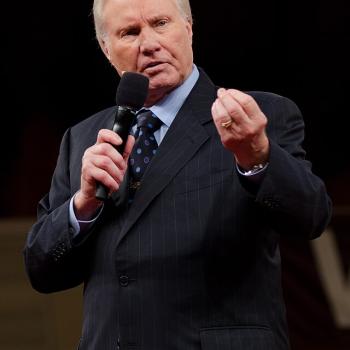A couple years ago I posted an earlier version of this here, but this is a somewhat revised and updated version–about “narrative theology,” which I think is widely misunderstood (e.g., as treating the Bible as fiction). I am leading a class in reading and discussing theologian Emil Brunner’s Dogmatics. For the life of me I still cannot figure out why Barth is so wildly popular and Brunner so neglected. One thing I have discovered over the years is that Brunner’s approach to theology was very similar to what is now called “narrative theology.” Especially in Volume 3 (The Christian Doctrine of Faith, the Church and the Consummation) he mentions “narrative” a great deal–as the nature of Scripture and the form of communication between God and us in which the gospel is imbedded. For him, faith is created through the Spirit via the narrative of God’s gracious dealings with humanity. For him, the Bible is what later theologian Clark Pinnock called a “theodrama” (as opposed to a systematic theology waiting to be systematized). So here is my revised and updated admittedly concise description of “narrative theology” and why this approach to Scripture and theology has no need of “inerrancy.”
What Is “Narrative Theology?”
Roger E. Olson
1. Narrative theology focuses on the Bible as a whole (canonical interpretation) as a dramatic account of God’s activity; its main purpose is to identify God for us (i.e., God’s character).
2. Narrative theology acknowledges that the Bible contains propositions, but it says biblical propositions are not independent of or superior to the metanarrative of God’s saving activity. (Jesus told stories—parables—and sometimes interpreted them with propositions. But the propositions serve the stories, not vice versa. If propositions could communicate the point better, then surely Jesus would have started with the propositions and then given the stories to “illustrate” them.)
3. A biblical proposition is “God is love” (1 John 4:8), but it needs interpretation. It does not simply interpret itself. What is “love” in this proposition? How is God’s love related to God’s justice, etc.? It won’t do simply to look up “love” in a dictionary. The only way to interpret “God is love” is to look at the biblical story that reveals God’s character through his actions.
4. According to narrative theology, the Bible contains many kinds of statements—commands, propositions, expressions of praise, prayers, poetry, prophecies, parables, etc. All are included by narrative theology under and within the rubric of “story” or “drama.” They are all parts of the great story of God whose central character (for Christians, at least) is Jesus Christ. Therefore, all must be interpreted in light of that story and its purpose—to reveal the character of God through his mighty acts leading up to and centering around Jesus Christ.
5. Theology is our best human attempt to understand the biblical drama-story and that includes developing canonical-linguistic models (complex metaphors, doctrines) that express its meaning for the church’s belief and life. But a theologian cannot do that properly unless he or she is “living the story” together with a community of faith shaped by the story.
6. Doctrines are secondary to the story; they cannot replace it. They are judged by their adequacy to the story—their ability to draw out and express faithfully the character of God as revealed by the story. But the story is primary; the doctrines are secondary and that means always revisable in light of a new and better understanding of the import of the story.
7. The task of the church is to “faithfully improvise” the “rest of the story.” Christians are not called simply to live in the story; they are called to continue the story in their own cultural contexts. First they must be grounded in the story. They must be people for whom the story “absorbs the world.” Second, they must together (communally) improvise the “rest of the story” faithfully to the story given in the Bible.
8. The alternatives are to either a) regard the Bible as a grab bag of propositions to be pulled out to answer questions, or b) regard the Bible as a not-yet-systematized system of theology (like a philosophy). Both alternatives fail to do justice to what the Bible really is—a grand drama of God’s mighty saving acts that progressively reveals his character culminating in the person and work of Jesus Christ.
9. Narrative theology has no need of “biblical inerrancy;” perfection with respect to purpose is sufficient to express biblical accuracy and authority. It is in and through the story that we meet God, especially in Jesus Christ. The Bible is the medium, the instrument, the indispensable witness to Jesus Christ. It is our life-changing meeting with him through the Bible’s Christ-centered story that elevates the Bible over other books. We do not believe in and trust Jesus Christ as Lord and Savior because of our belief in the Bible; we believe in the Bible because it is the unique instrument and witness of our meeting with him.












